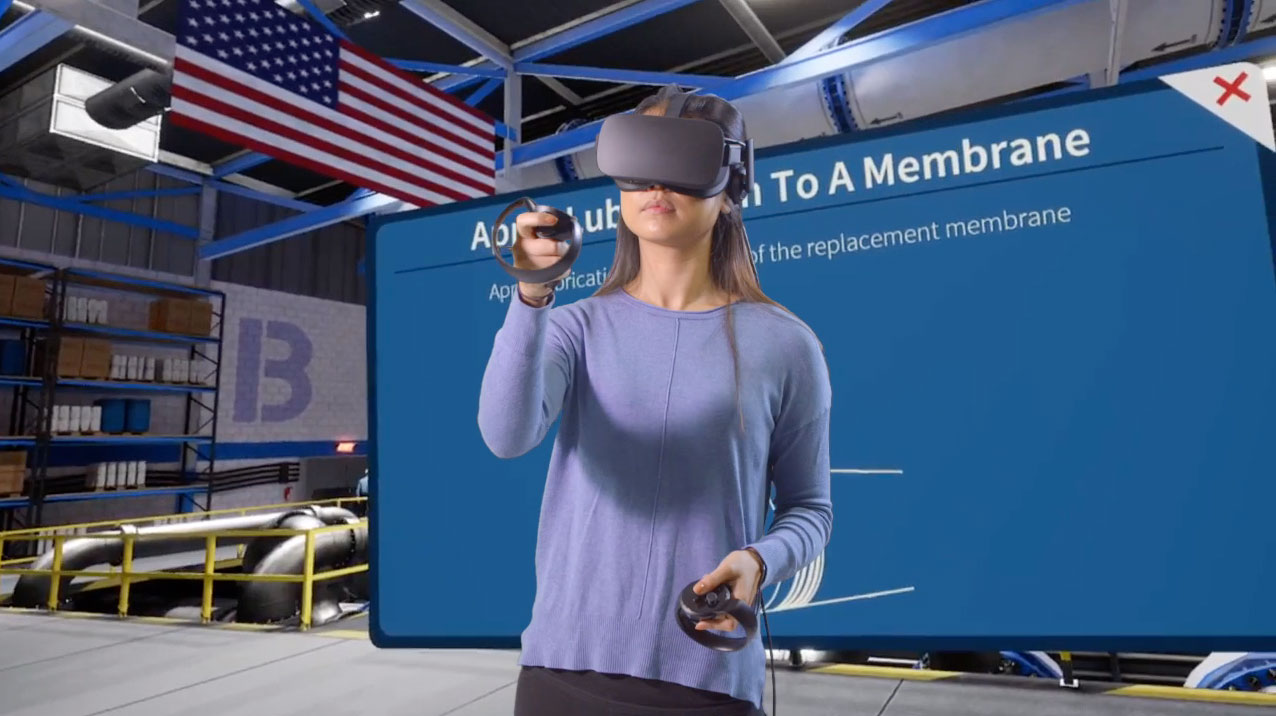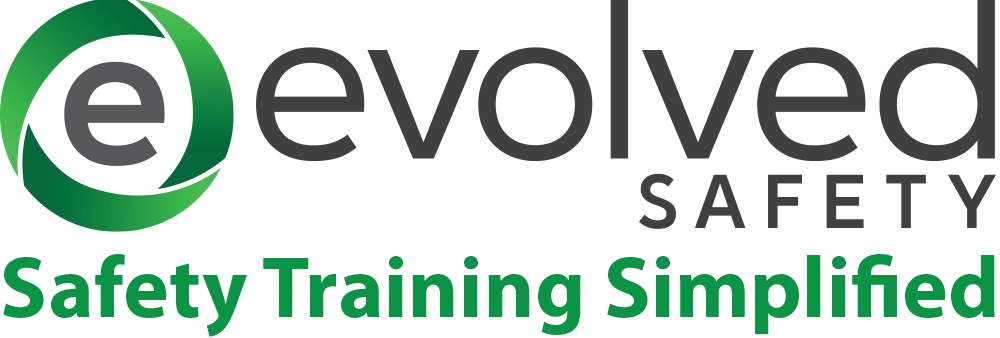Virtual reality has been a reality for a lot longer than you may think. While the term “virtual reality” wasn’t coined until the late 1980s, the first virtual reality multimedia device, the Sensorama, was invented in 1957 by Morton Heilig. There are several instances of virtual reality technology that you’ve probably used or at least heard of along the way. Flight simulators, the Nintendo Wii gaming system, and Google Streetview all use 3D modeling technology to allow a user to interact with a computer-simulated environment… virtual reality!
The capabilities of virtual reality technology continue to compound. The real breakthrough is the convergence of VR tech with other technologies including sensors, 3D modeling, eye tracking, and screen resolution (just to name a few) that are elevating the experience and expanding the application for VR.
Virtual Reality Workplace Training
When virtual reality training came onto the scene in the early 2000s it was extremely limited. The headsets were monstrous, the systems were clunky and required networking or wired connectivity, and the training courses had low resolution and slow performance. Not to mention how costly it was.
Fast forward to today and reality training is a different story. With the developments in virtual reality technology, VR training isn’t what you might think. Let’s bust some of the myths about today’s virtual reality training.
Myth #1: Virtual Reality Training Costs Too Much

Benefits of VR Training
As technology advances, it becomes less expensive and more accessible. We get faster and better at building new technology with less manpower. You also have more competition that can drive down costs.
Virtual Reality technology has gained leaps and bounds in its capabilities over the last five years. There are also more VR hardware manufacturers, and it’s become easier to program software (training courses). The overall cost of VR technology training has dropped dramatically. When you combine that with the benefits of greater effectiveness and flexibility, virtual reality training is worth the investment.
Myth #2: Virtual Reality Training is Only for Individuals
While it certainly took off during the height of the COVID-19 pandemic when everyone was virtual or remote, virtual reality training doesn’t have to be an individual experience. It can be used by a group remotely or deployed in a classroom. Advanced virtual reality training platforms allow dozens of users to learn, interact, and collaborate in the same space — even if separated by thousands of miles. Virtual reality training is a great way to conduct group training scenarios or have individuals learn from watching each other’s training experience.
Myth #3: There Aren’t Very Many Virtual Reality Training Courses
Improved VR software, and more usable 3D modeling computer technology, are helping virtual reality training companies create training programs more easily. There are several VR training programs available for general safety, energy and utilities, manufacturing, construction safety, and even human resources and soft skills training.
Virtual reality training programs include scenarios to help employees practice safety behaviors and techniques, perform inspections, identify and correct workplace hazards, prepare and respond to scenarios, and simulate human interactions.

Myth #4: Virtual Reality Training Doesn’t Provide a Real Experience
Current virtual reality training experiences are richer and more realistic than ever before, creating a truly immersive experience. But it’s important to know that the most engaging virtual reality training is a combination of technologies. ‘Virtual Reality’ has become something of a catch-all term for Extended Reality, (or “XR” for short), which includes three distinct technologies: Virtual Reality, Augmented Reality, and Mixed Reality.
Virtual Reality (VR) is the computer-generated simulation of a three-dimensional image or environment that can be interacted with in a seemingly real or physical way by a person using special electronic equipment, such as an HMD (head-mounted display).
Augmented Reality (AR) adds a digital overlay on top of a live camera view. Examples of AR include Snapchat lenses and the game Pokémon Go. As the name suggests, AR is augmenting or changing reality, while VR offers complete immersion, shutting out the physical world.
Augmented Reality and Mixed Reality (MR) are both considered immersive technologies, but they aren’t the same. Mixed Reality is an extension of AR that allows real and virtual elements to interact in an environment.
These three technologies come together in a digital simulation of lifelike scenarios for training purposes. Trainees enter a 360°, active learning environment, experiencing sights and sounds that dissolve the barrier between virtual and actual reality. Using the headset and controllers, trainees look, speak, and move about freely in a 3D virtual setting, interacting with simulated real-world tools, machinery, and other trainees and instructors.
When combined with story narratives and learning curriculum developed by subject matter experts, the result is trainees learning in the best way possible — through personal experience — significantly improving learning retention, job performance, team collaboration, workplace safety, and cost.
Myth #5: Virtual Reality Training Isn’t Effective
The effectiveness of Virtual Reality Training (or any training, for that matter), depends on the quality of the training being offered. Research shows four critical things are needed for any successful training experience, virtual or otherwise: realistic practice, spaced repetitions, contextualized scenarios, and critical feedback.
When these four components are present, virtual reality training is one of the most effective platforms for training. Benefits include:
- 80% improvement in user learning retention
- 75 times more confidence in taking action on what they’ve learned
- 83% documented user improvement in time on task
Thanks to the acceleration of technology, VR training is accessible and has multiple applications for workplace safety training and employee health and wellness training. And the capabilities continue to grow. If you haven’t investigated virtual reality training in a while, or even at all, it’s time to give this engaging workplace training format serious consideration.
Contact Evolved Safety to schedule a hands-on demo of Virtual Reality training today!
Source: Forbes Magazine, Augmented and Virtual Reality After Covid-19
